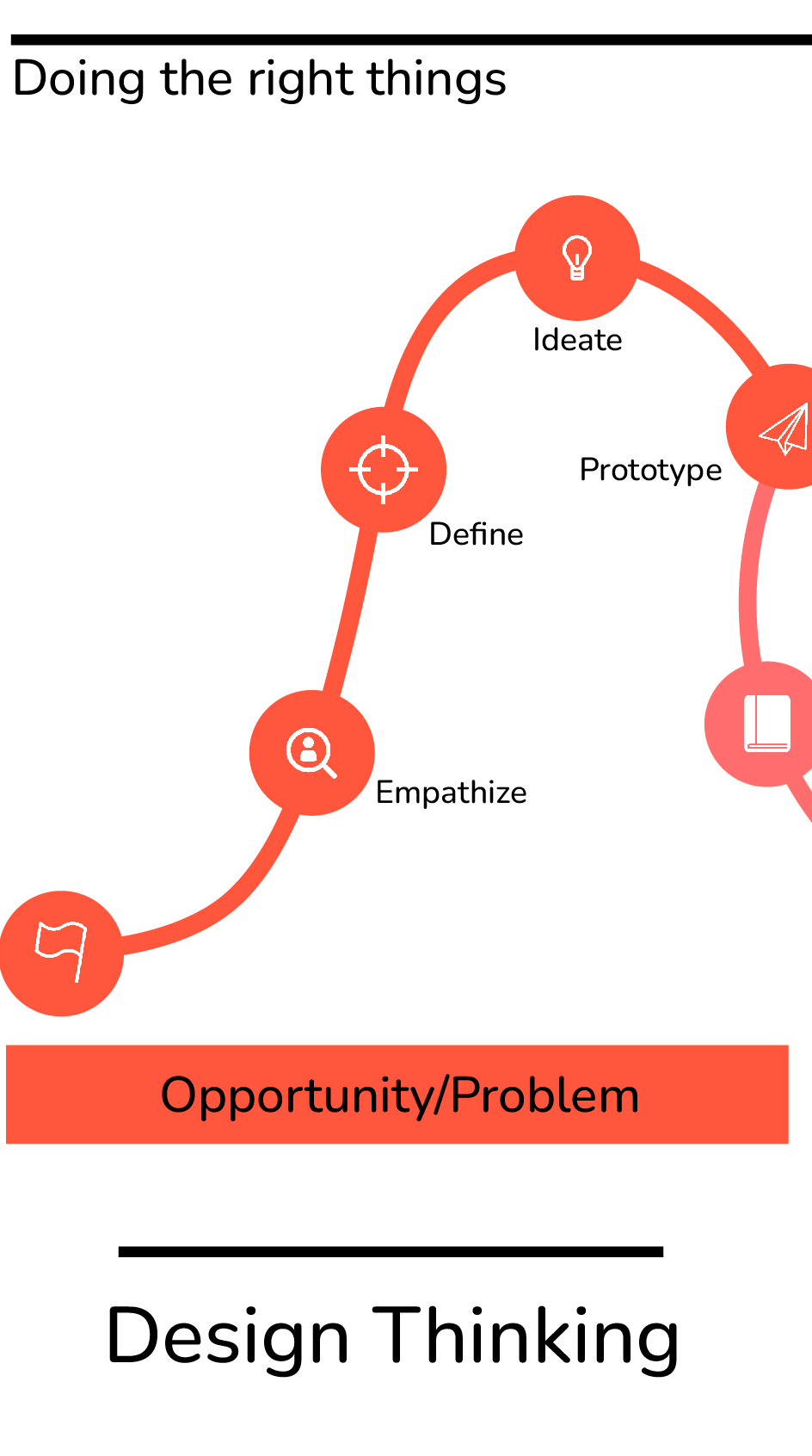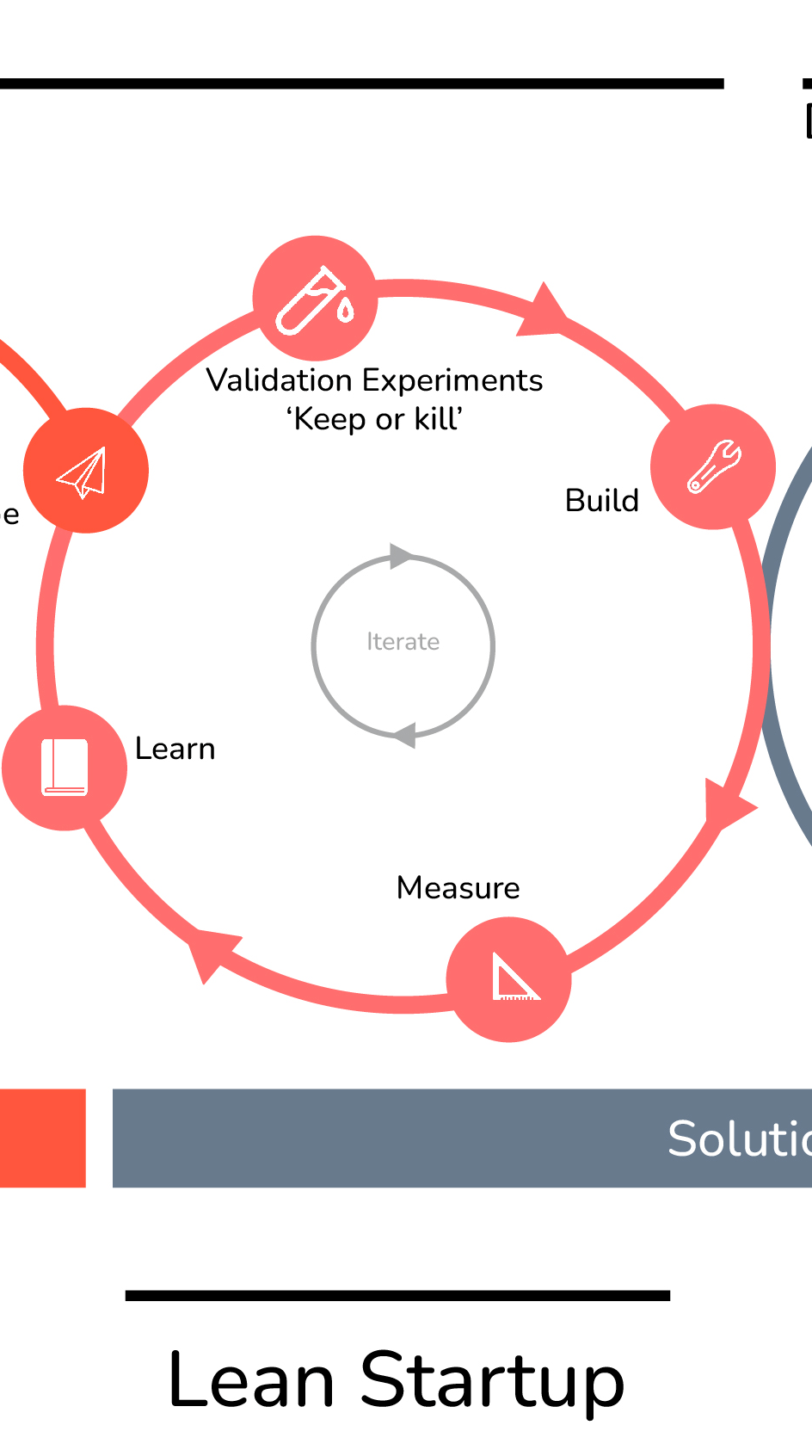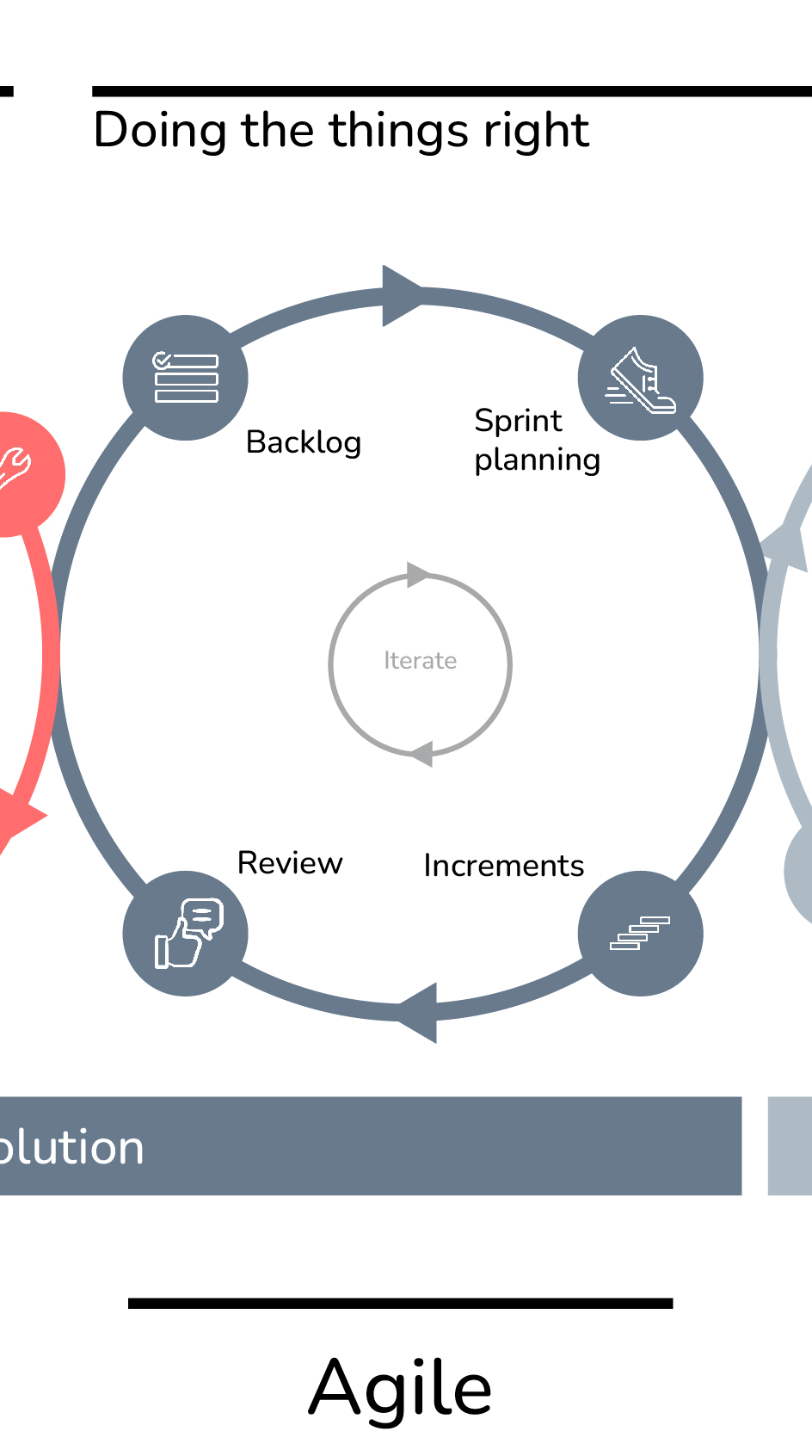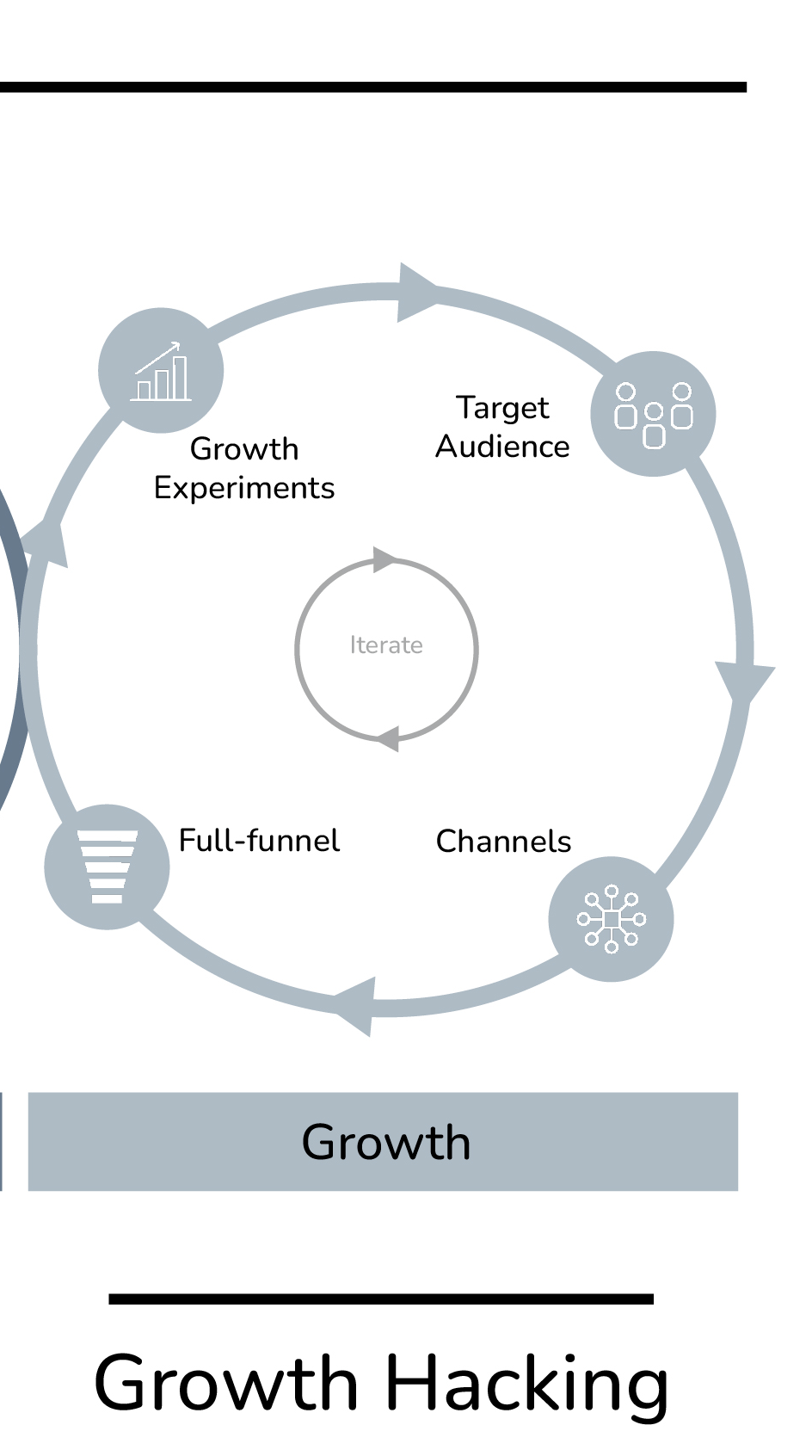Did you know that you are not done yet after developing and implementing something your end-user wants?
This is where it starts at the end. This is the point where your solution can either super-succeed, succeed, or fail. I hear you thinking, how could I still fail after I’ve come so far?
It is not because you built the right thing and you did it in the right way that your end-user will magically come knocking at your door, asking for your solution.
This is where growth hacking comes in. You must make the customer aware of your solutions’ existence and its benefits. To succeed it is important to spread the right message through the right channels, to the right target audience. This can be achieved through rapid growth experimentation, running a multitude of small experiments in every stage of the marketing funnel to find the right elements for each part of the puzzle. This quickly gives you insights into what works best for your business, and what does not. When this is done right, you achieve product-market fit which sets you up for sustainable growth moving forward.
The takeaways
As a recap you must remember to:
• Start at the end(-user), making sure you do the right things, putting your user at the center
• Validate your success (or failure) upfront through experimentation, before making any big investments
• (Re-)evaluate your business case in between every step of design, experimentation and development, avoiding useless costs
• Do things right in development and implementation, foreseeing the necessary flexibility to re-prioritize and maximize value
• Create awareness and activate your end-user by spreading the right message via the right channels to avoid an end at the start
Now you know what we do at 7B; putting the end-user, customer, patient, consumer, passenger, or client at the very center of the development of new products, services, and business models. We believe that is what it’s all about.
Feel free to share any best or worst cases, we can all learn from each other 🙏
![[object Object]](https://static-files.umso.co/lib_SgVrTchGksgQdBiV/5to2tmehoshuavn2.png?w=306)





